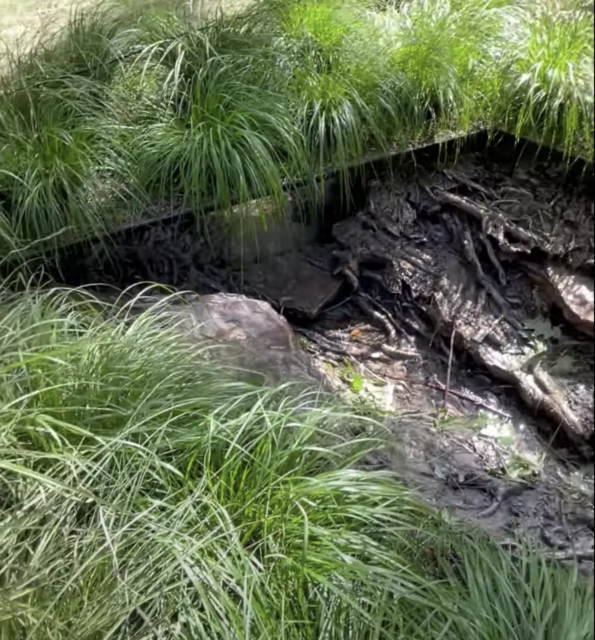
Cristina Iglesias’s Landscape and Memory consists of five bronze pools flowing along the Oval Lawn in Madison Square Park (photo by twi-ny/mdr)
Who: Cynthia Daignault
What: Free art talk in conjunction with Cristina Iglesias’s Landscape and Memory
Where: Oval Lawn, Madison Square Park
When: Wednesday, August 3, free, 6:00
Why: Mad. Sq. Art concludes its free summer talk series with American painter Cynthia Daignault discussing monuments, memory, and the natural world as it relates to her work and Spanish artist Cristina Iglesias’s Landscape and Memory, which is on view in the park through December 4. Daignault’s canvases feature lush mountain valleys, black-and-white trees, words barely visible on black backgrounds, objects such as skulls and food, and figures such as JFK, Marilyn Monroe, Barack Obama, Malcolm X, and Divine. Iglesias’s public interventions include water-based works in England, Spain, Mexico, Brazil, Belgium, and Norway in addition to gates and passages, entwined murals, rooms and mazes, screens, suspended pavilions, and other conceptual and architectural projects. On August 3 at 6:00, Daignault will be on the oval lawn in Madison Square Park to share her thoughts on Iglesias’s captivating piece, a stream that winds through the grass in five bronze sculptural pools, referencing Cedar Creek and Minetta Brook, which once upon a time flowed across the park, heading for the East or Hudson River.
Each pool offers its own calming respite, with water gently babbling against rocks. “I started being interested in the use of water as an element of movement and change in this culture and also in the city, a way to show how nothing if we look carefully is always the same,” Iglesias explained in a 2021 virtual discussion for Whitechapel Gallery. “And I think water somehow makes that more visible.” It’s as if Iglesias, the daughter of a scientist, has uncovered a slice of the geographic history of Madison Square Park, now bubbling to the surface. (The park has also been home to a potter’s field, a parade ground / arsenal, and a reform school.) The title pays tribute to Simon Schama’s 1995 treatise Landscape and Memory, which explores the Western world’s interaction with nature. “Landscapes are culture before they are nature; constructs of the imagination projected onto wood and water and rock,” Schama writes. “Once a certain idea of landscape, a myth, a vision, establishes itself in an actual place, it has a peculiar way of muddling categories, of making metaphors more real than their referents; of becoming, in fact, part of the scenery.” Following the informal talk, the public is invited to continue the dialogue directly with Daignault.